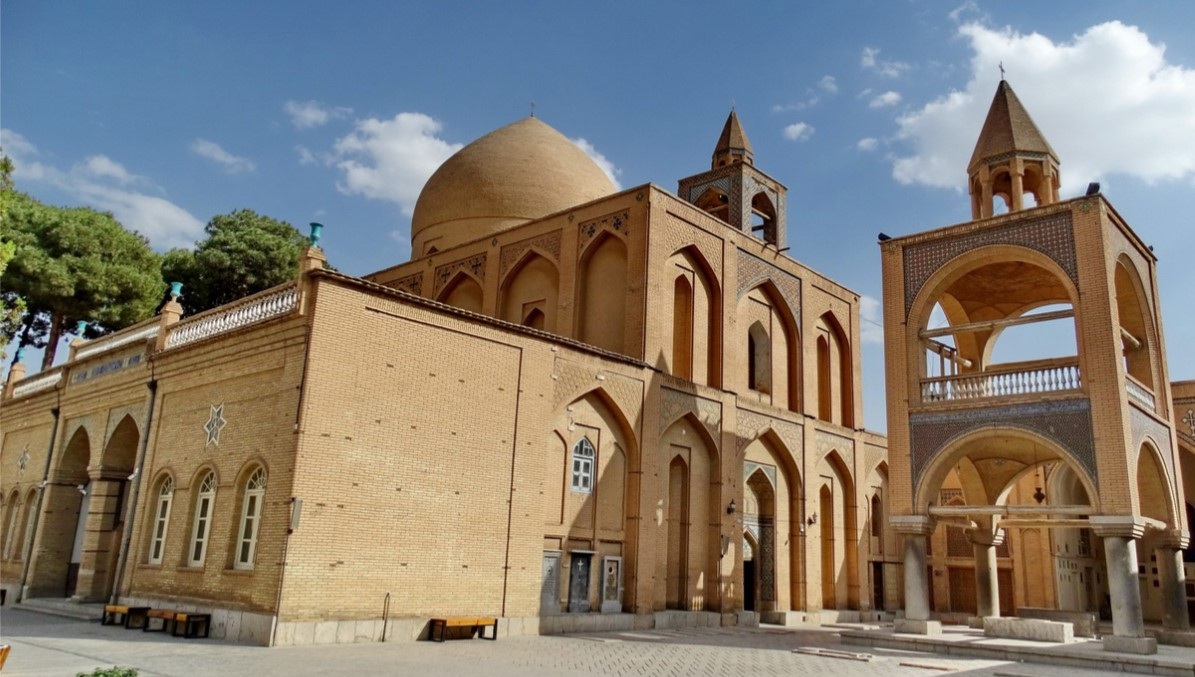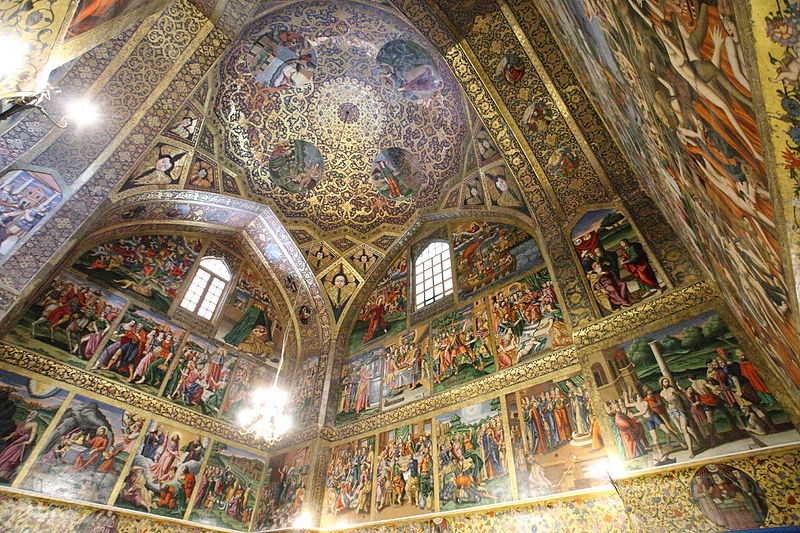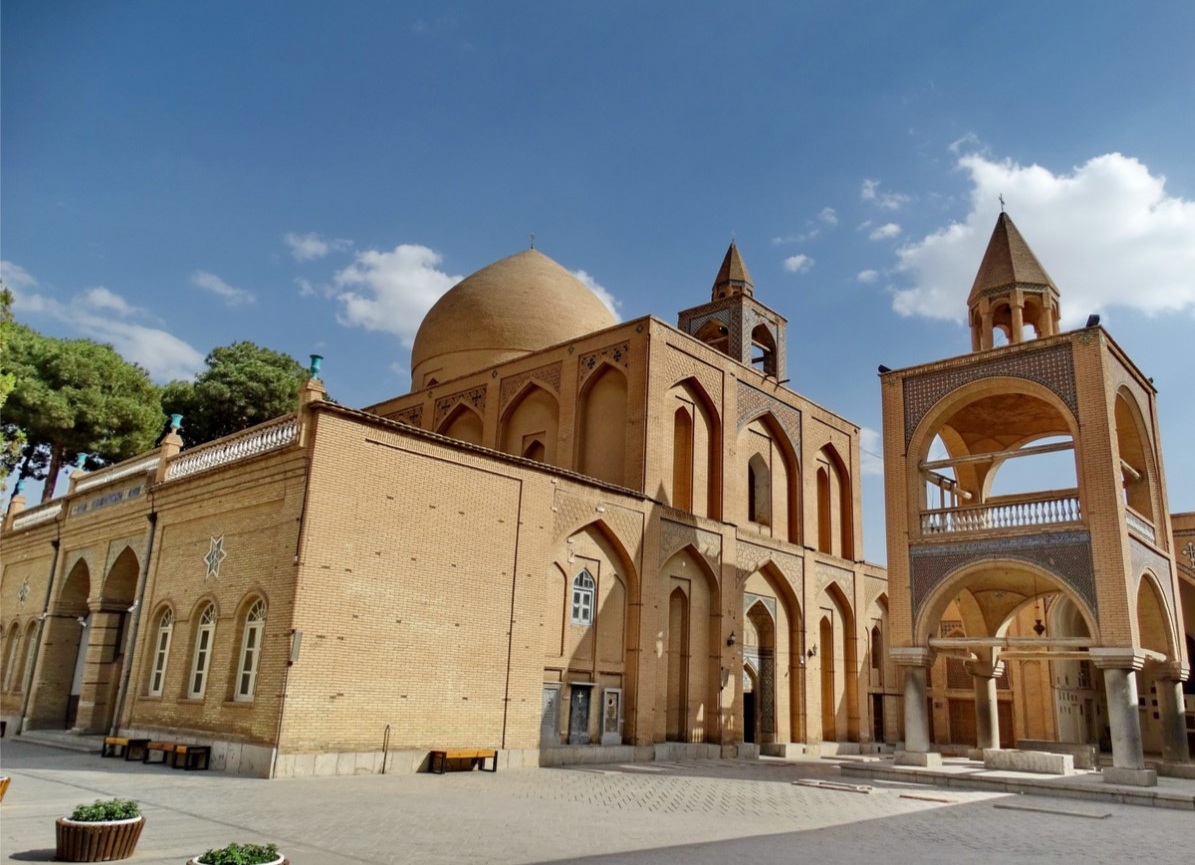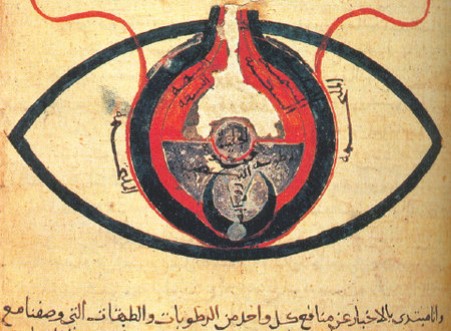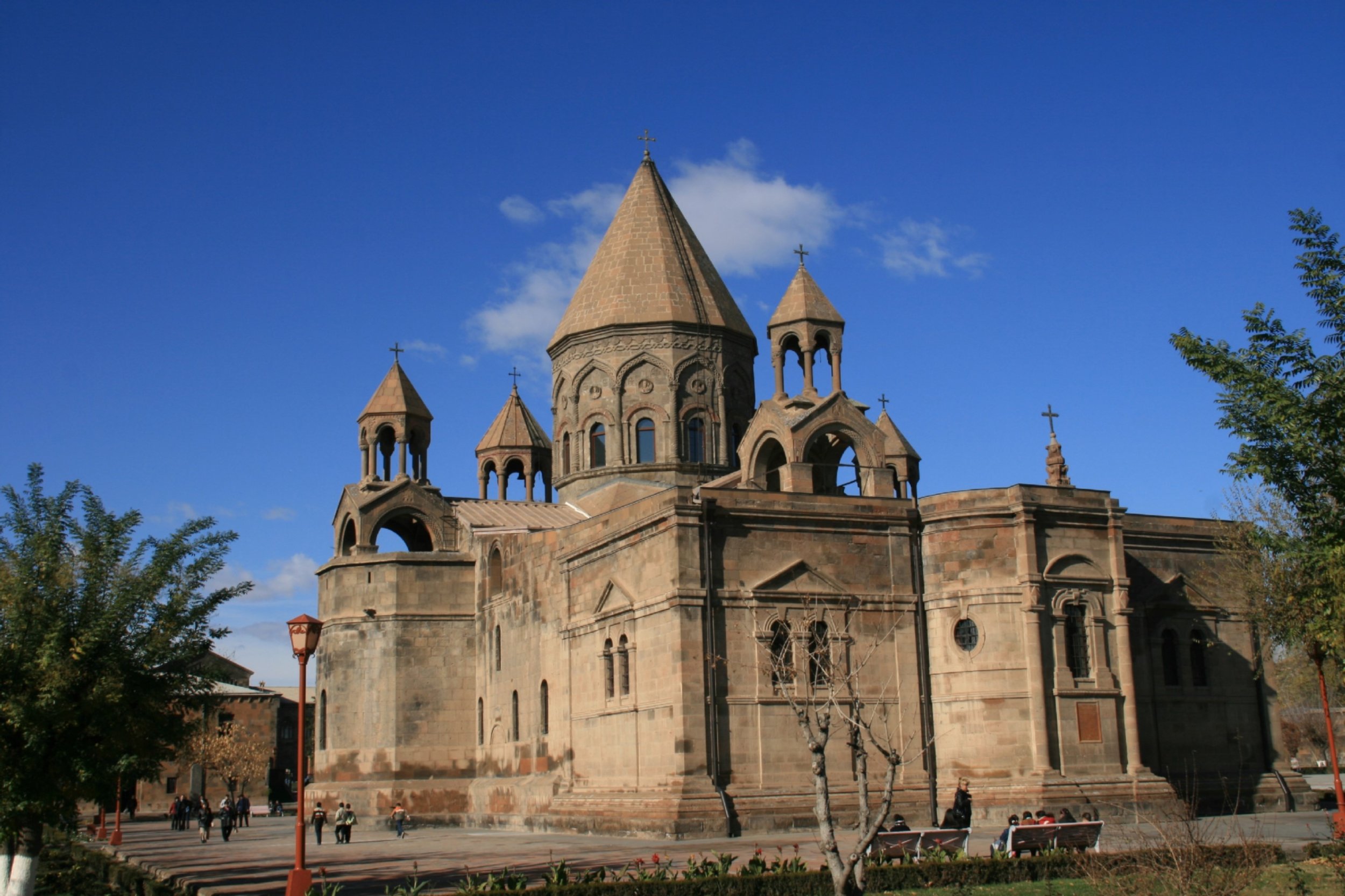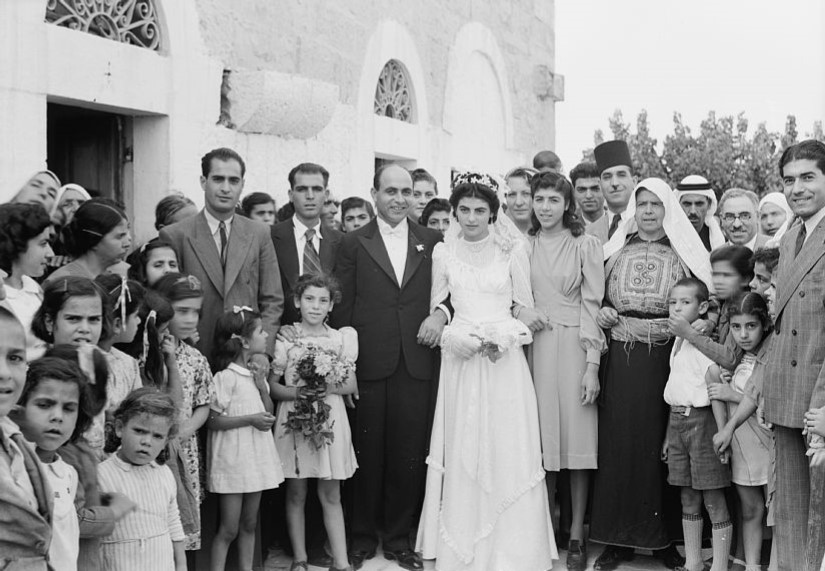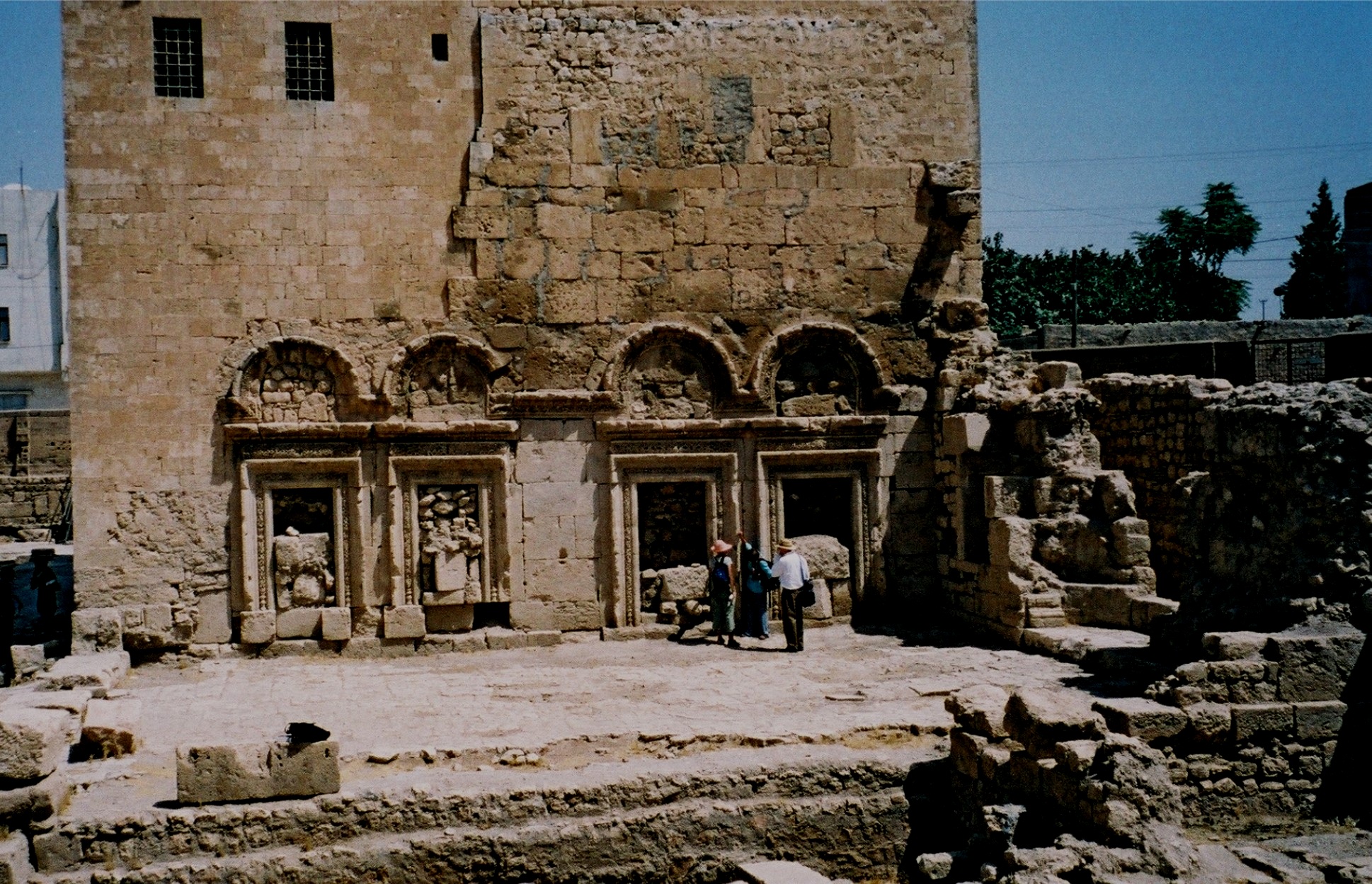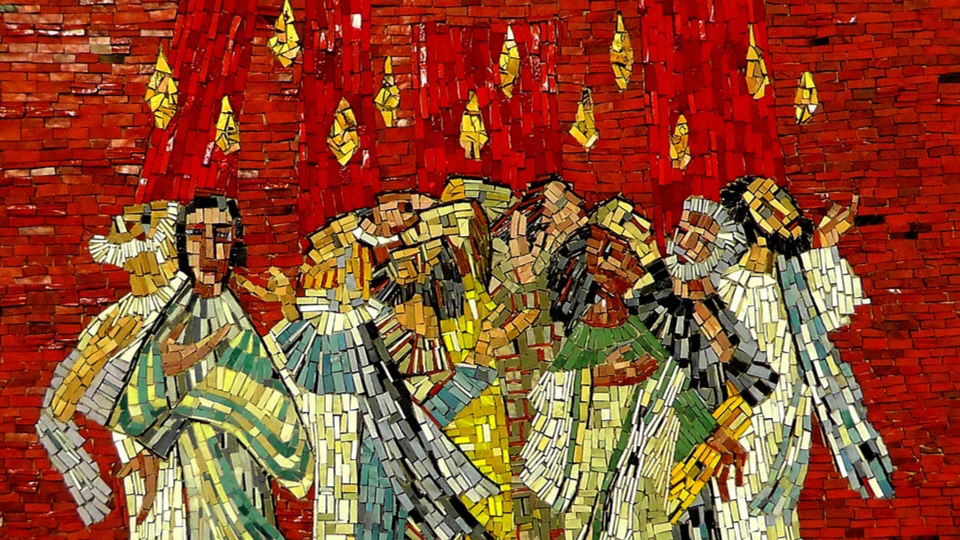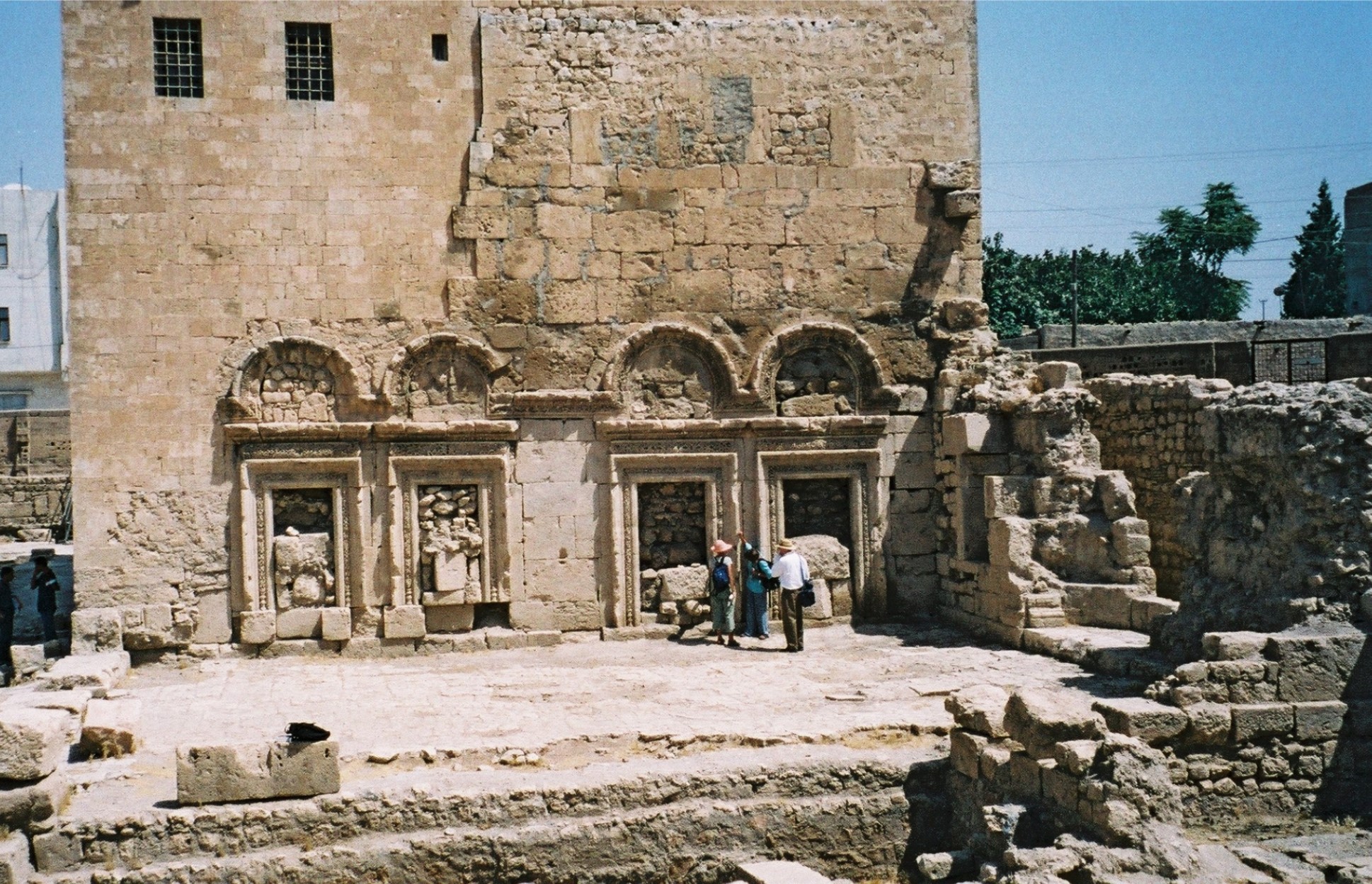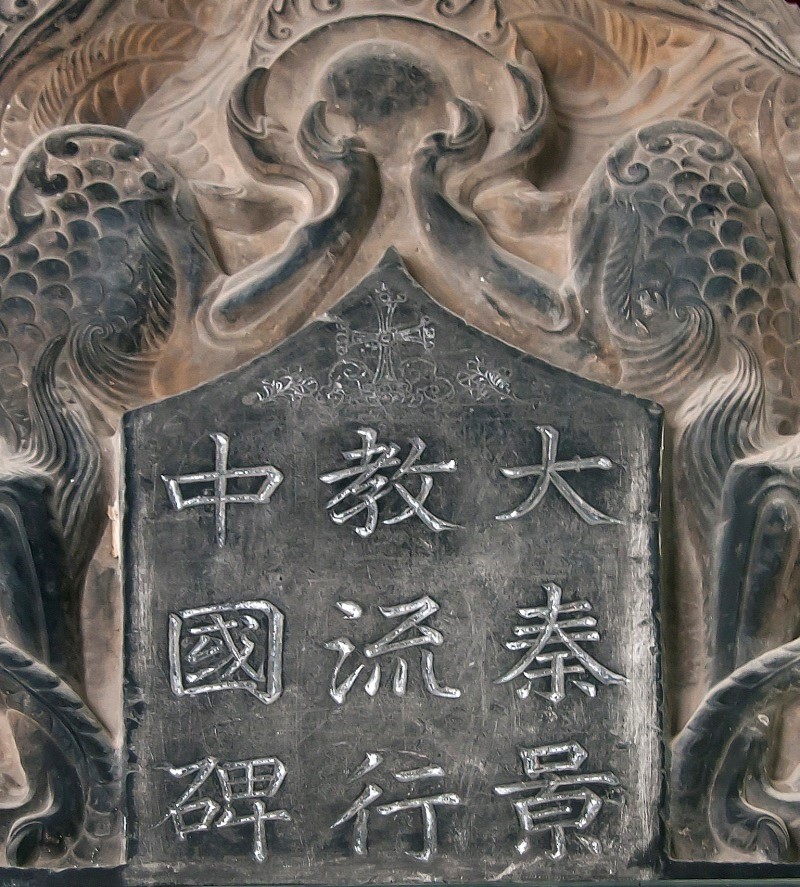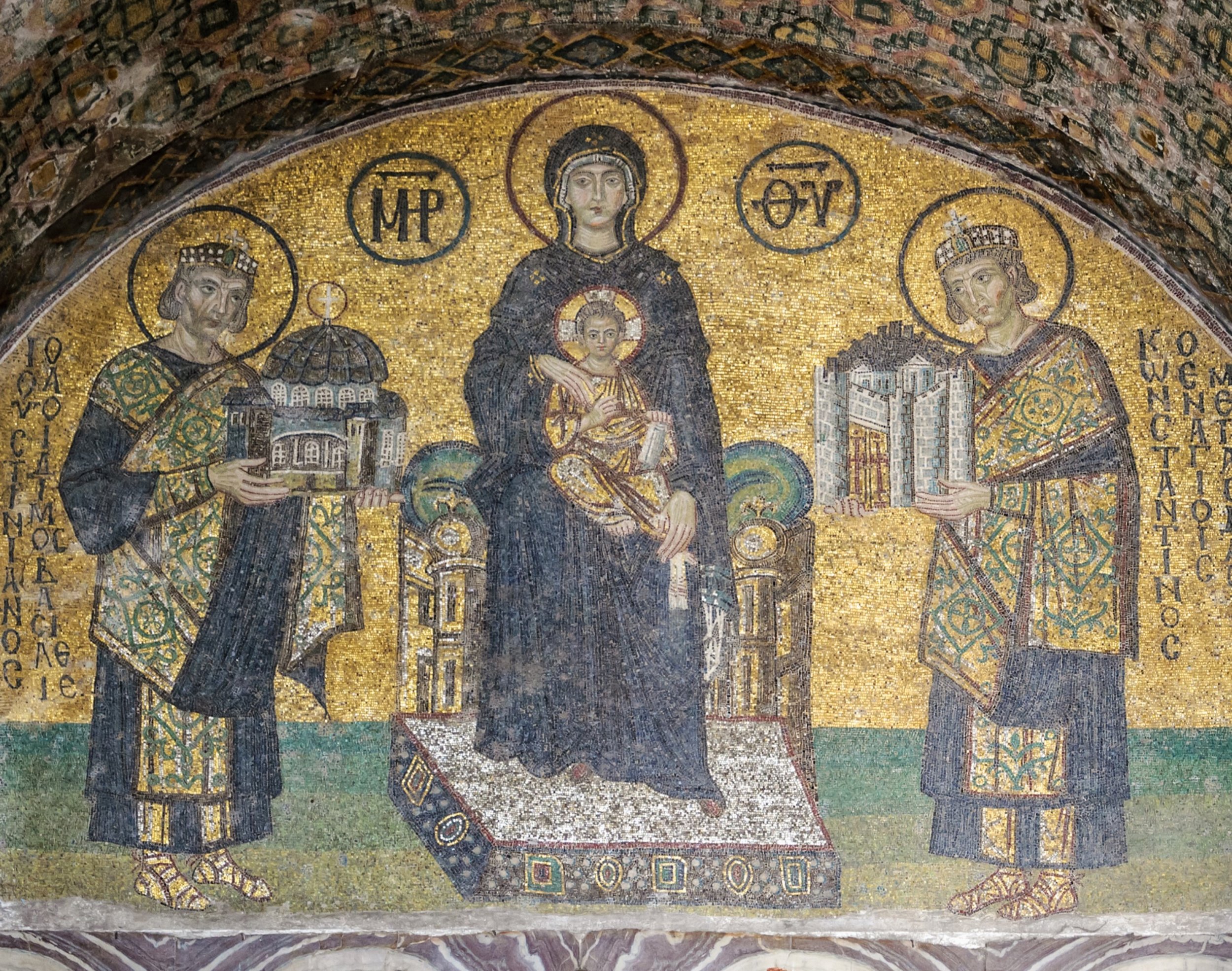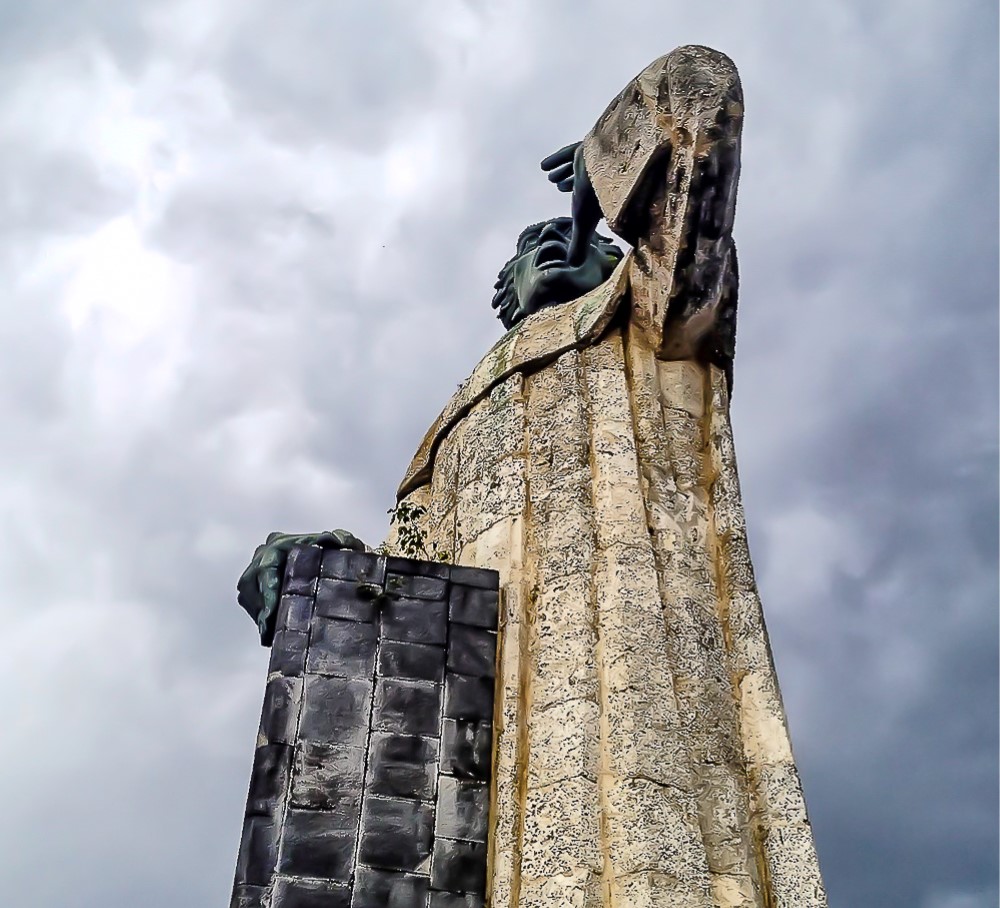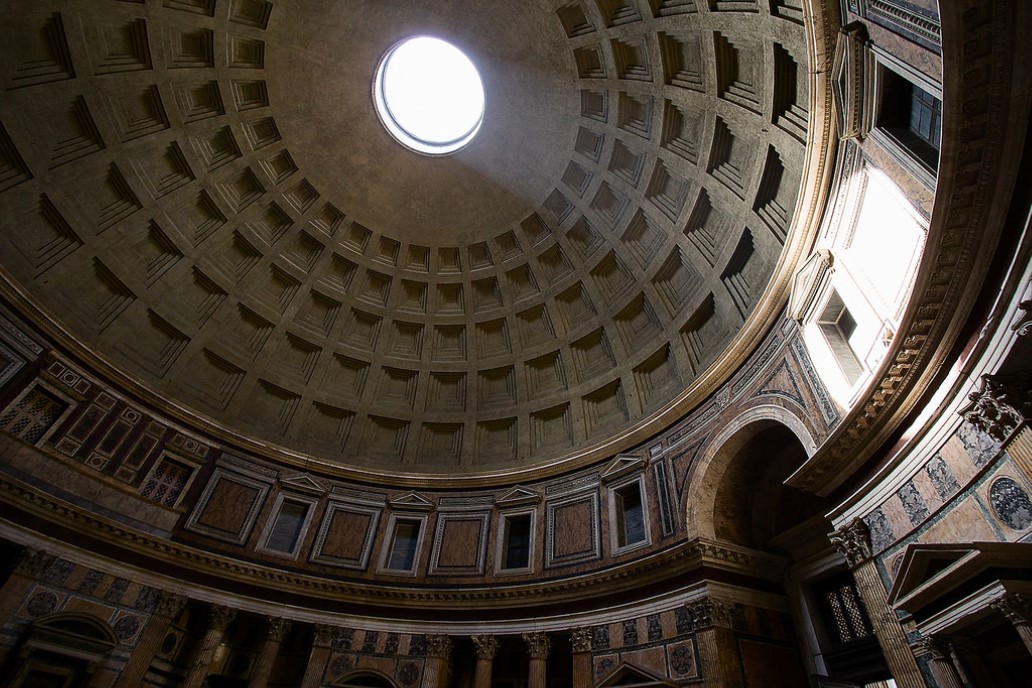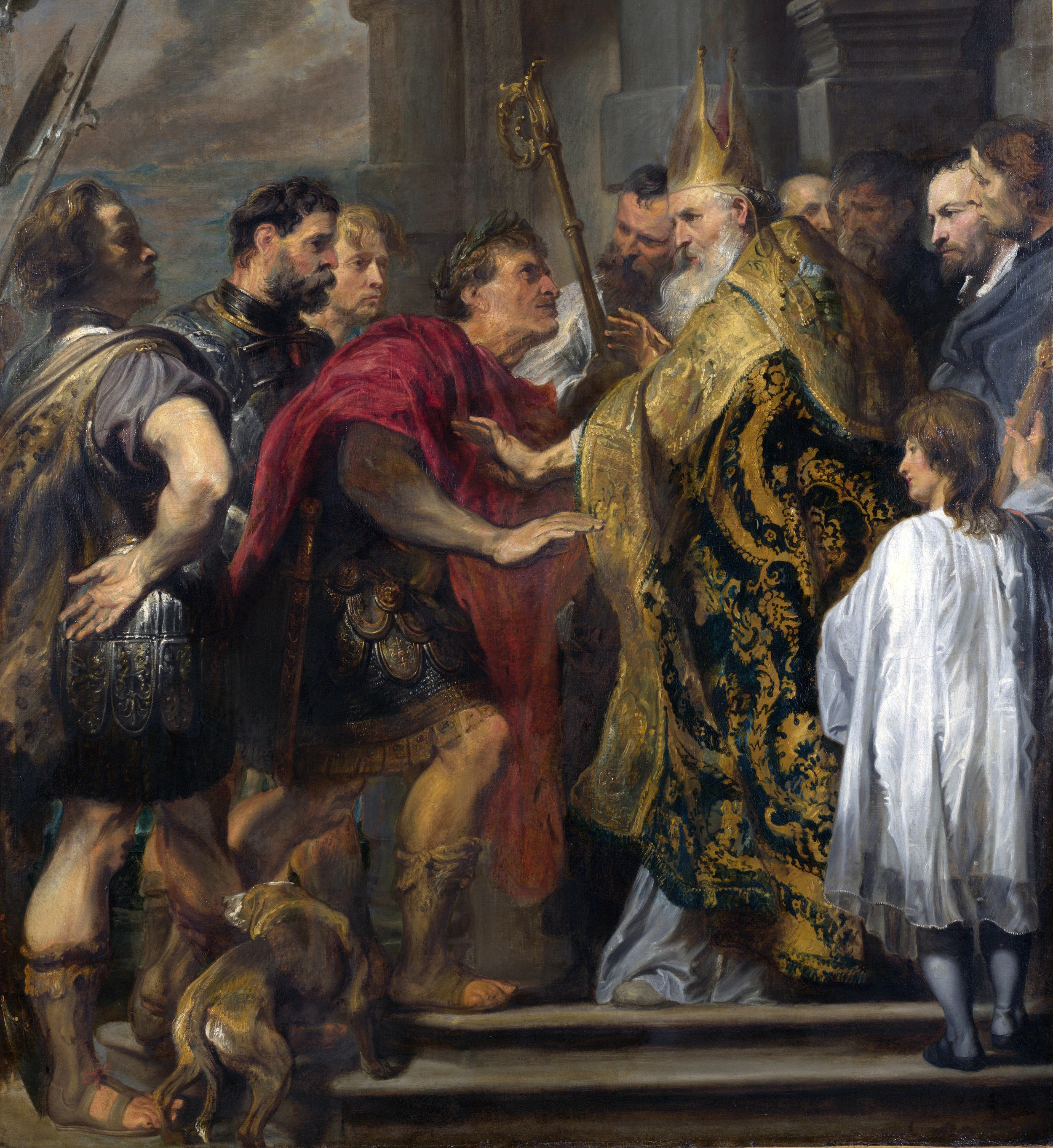The Church Under the Persian Empires
Photograph: This is the Church of the Saintly Sisters, or Vank (meaning "monastery" in Armenian) Cathedral in Iran. Photo credit: Rasool Abbasi17 | CC4.0, Wikimedia. The Vank Cathedral was built in 1606 AD for the hundreds of thousands of Armenian Christian deportees who were displaced by the Ottoman War of 1603 - 1618 and resettled in the New Julfa district of Isfahan, Iran. The interior is below (Photo credit: Thomas | CC2.0, Wikimedia Commons).
Introduction
The selection of perspectives on church history in this section — Church and Empire — has been guided by three factors: (1) to demonstrate that Christianity has not been a “white man’s religion”; (2) the study of empire as a recurring motif in Scripture by recent biblical studies scholars; and (3) explorations of biblical Christian ethics on issues of power and polity, to understand how Christians were faithful to Christ or not. Christian relational ethics continues a Christian theological anthropology that began with reflection on the human nature of Jesus, and the human experience of biblical Israel.
This page explores the experience and activities of Christians under various Persian regimes.
Other Resources on the Church Under the Persian Empires
The Church of the East 431 AD resources exploring the Syriac-speaking church that is sometimes seen through the lens of Nestorius, a characterization which has been recently challenged
The Oriental Orthodox Church 451 AD resources exploring the churches which upheld the Miaphysite language of Jesus’ one “physis” while the pro-Chalcedonian Churches (Constantinople and Rome) upheld two “physeis.” The selections below are guided by the attempt to understand the schism that occurred at the Council of Chalcedon in 451 AD. This includes the Egyptian Coptic, Armenian, Syrian, Ethiopian, Eritrean, and Indian Malankaran Churches.
Peter Theodore Farrington, The Orthodox Christology of St. Severus of Antioch (Orthodox Wiki article) (c.459 - 538 AD)
Susan Ashbrook Harvey, Holy Women of the Syrian Orient. University of California Press | Amazon book, 1987. Ashbrook explores Mary, Niece of Abraham of Qidun; Pelagia of Antioch; the Persian Martyrs; the Women Martyrs of Najran; Mary, Euphemia, and Susan from Lives of Eastern Saints by John of Ephesus; Anastasia; Febronia; Shirin.
Samuel Hugh Moffett, A History of Christianity in Asia, Volume 1. Orbis Press | Amazon book, Apr 1998, and Volume 2. Orbis Press | Amazon book, Mar 2005.
Susan Ashbrook Harvey, Asceticism and Society in Crisis: John of Ephesus and The Lives of the Eastern Saints. University of California Press | Amazon book, Jan 1990. John's sixth century writing narrates his experiences in the villages of the Syrian Orient, the deserts of Egypt, and the imperial city of Constantinople. Harvey examines the late antique Byzantine East, the character of ascetic practices, the traumatic separation of the "Monophysite" churches, the fluctuating roles of women in Syriac Christianity, and the general contribution of hagiography to the study of history.
William L. Petersen, The Christology of Aphrahat, the Persian Sage: An Excursus on the 17th "Demonstration". JSTOR/Vigiliae Christianae, 1992. Petersen discusses the apparent subordinationism in Afraphat as representative of a Semitic-Judaic Christianity
Sebastian P. Brock, The "Nestorian" Church: A Lamentable Misnomer. Bulletin of the John Rylands Library, 1996. Brock discusses the historical, theological, and linguistic background to the debates around the two natures of Christ
Stephanie K. Skoyles Jarkins, Aphrahat the Persian Sage and the Temple of God: A Study of Early Syriac Theological Anthropology. Marquette University, 2005. Jarkins’ dissertation explores how Aphrahat relied on the Christian vision of the individual human person as a dwelling place of God; includes an impressive overview of other biblical and Christian literature
Robert Miller, Syriac and Antiochian Exegesis and Biblical Theology for the 3rd Millenium. Gorgias Press | Amazon book, Dec 1, 2008.
Philip Jenkins, The Lost History of Christianity: The Thousand-Year Golden Age of the Church in the Middle East, Africa, and Asia-and How It Died. HarperOne | Amazon book, Nov 3, 2009.
Ilya Lizorkin, Aphrahat's Demonstrations: A Conversation with the Jews of Mesopotamia. Stellenbosch University, 2009. Lizorkin’s dissertation on the likely background to Aphrahat's writings; also Eli Lizorkin-Eyzenberg, Semitic Chrisitianity: St. Aphrahat & The Sages of Babylonian Talmud. Create Space Independent Publishing | Amazon book, Aug 2, 2015. Develops his earlier dissertation (above) and appreciates Aphrahat as a representative of a Jewish-Christian dialogue at the time and place the Babylonian Talmud was being written.
Morwenna Ludlow, The Early Church. I.B. Tauris | Amazon book, 2009. Ludlow includes chapters on the Christian centers of Nisibis and Edessa along with Alexandria and Cappadocia.
Aziz Atiya, History of Eastern Christianity. Gorgias Press | Amazon book, Jan 1, 2010. Atiya is a Coptic Christian, surveys Copts and Ethiopians, along with other Oriental Orthodox Churches in Asia: Syrians, Nestorians, Armenians, and Indians.
Susan Ashbrook Harvey, Song and Memory: Biblical Women in Syriac Tradition. Marquette University Press | Amazon book, 2010.
Margaret Mowczko, Nino of Georgia: A Woman Evangelist “Equal to the Apostles”. Marg Mowczko, Jan 14, 2012.
Metropolitan Hilarion Alfeyev, Saint Isaac the Syrian and His Spiritual Legacy: Proceedings of the International Patristics Conference Held at the Sts Cyril and Methodius Institute Studies, Moscow, October 10-11. St. Vladimir’s Seminary Press | Amazon book, Oct 1, 2015. Alfeyev explores the 7th century Christian hermit from Nineveh, in present-day Iraq
Gregory Bar-Hebraeus, The Ecclesiastical Chronicle. Gorgias Press | Amazon book, Sep 2015. Translated by David Wilmhurst. Gorgias Press, the publisher, writes, “The Ecclesiastical Chronicle of the Syriac Orthodox polymath Bar Hebraeus (†1286), an important Syriac text written in the last quarter of the 13th century, has long been recognised as a key source for the history of the Syriac Orthodox Church and the Church of the East.” See also Bar Hebraeus, Laughable Stories (Free Amazon Kindle book) translated by E.A. Wallis Budge; a collection of stories.
Richard E. Payne, A State of Mixture: Christians, Zoroastrians, and Iranian Political Culture in Late Antiquity. University of California Press | Amazon book, 2015. Christian communities flourished during late antiquity in a Zoroastrian political system, known as the Iranian Empire. Whereas previous studies have regarded Christians as marginal, insular, and often persecuted participants in this empire, Payne demonstrates their integration into elite networks, adoption of Iranian political practices, and participation in imperial institutions.
Christopher Thornton, Last Word: Christian Iran. Commonweal, Feb 11, 2016.
Andrew Doran, When Christianities Collide: Persecuted Churches of the East Need Dialogue With the West. The American Conservative, Jun 9, 2016.
Mark Howard, The Story of Iran’s Church in Two Sentences. The Gospel Coalition, Jul 30, 2016.
Fariba Nawa, Iranians Are Converting to Evangelical Christianity in Turkey. NPR, Dec 14, 2018.
Emma Green, The Impossible Future of Christians in the Middle East. The Atlantic, May 23, 2019. “An ancient faith is disappearing from the lands in which it first took root. At stake is not just a religious community, but the fate of pluralism in the region.”
Mark Ellis, Fastest Growing Church Has No Buildings, No Central Leadership, and Is Mostly Led by Women. God Reports, Sep 11, 2019. “The Iranian awakening is a rapidly reproducing discipleship movement that owns no property or buildings, has no central leadership, and is predominantly led by women.”
The Church in the Middle East: Topics:
This page is part of our section of Church and Empire which explores the experience and activities of Christians under various regimes in the Middle East: Persian, Arab, Turkish, and the State of Israel.
Church and Empire: Topics:
This page is part of our section on Church and Empire. These resources begin with a biblical exposition of Empire in Church and Empire and the meaning of Pentecost in Pentecost as Paradigm for Christianity and Cultures, then grouped by region: Middle East, Asia, Africa, Europe, Americas, then Nation-State, with special attention given to The Shoah of Nazi Germany.
